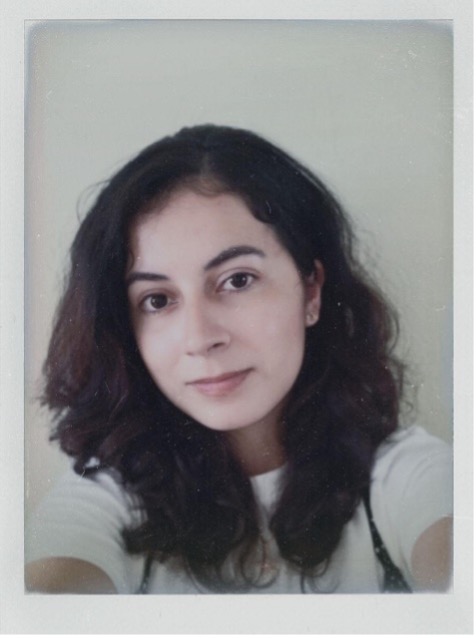Apple TV’s new show “Foundation” premiered on Sept. 24 and is already being met with polarizing reactions. At the time of this article’s writing, three episodes have been released out of the planned 10-episode season. The reactions so far aren’t too surprising though, considering how the show deviates from original books.
“Foundation” was originally a novel written by Isaac Asimov and is the first book in the larger “Foundation” series. The first book was published in 1951, and the story is largely inspired by the fall of the Roman Empire. One of the major themes in this story is the concept of psychohistory: a blend of math and human psychology that uses complex equations to determine the probability of all possible future events happening. Psychohistorians that use this particular type of science appear to have an uncanny ability to predict the future, when all they are really doing is seeing how likely it is that any possible future event will happen.
Hari Seldon, the main psychohistorian in the novel, predicts that the Galactic Empire will be totally obliterated within the next 300 years and that a Dark Age will descend upon them. He knows that nothing can stop the downfall of the Empire and thus makes it his mission to create a new Foundation, which will serve as a cornerstone for all human knowledge and will eventually lead to the creation of the next empire. The book’s timeline spans over 100 years, so there are quite a few characters that have a direct or indirect impact on the way the Foundation eventually grows.
The novel relies heavily on the dialogue between characters to drive the story forward. There isn’t much in the way of action, and although the concepts presented in the book are forward-thinking, it’s also very much a product of its time. There isn’t anything in the way of diversity written in the characters despite the Galactic Empire being made up of at least 25 million planets.
This definitely presents a challenge: Adapting a novel written for the mid-20th century into a television show for a modern audience can come with its own set of problems. Apple seems to have taken the approach of seeing the books as a source of inspiration, rather than making the show a true adaptation. To their credit, they also attempt to flesh out some of the more minor elements in the story to make the Galactic Empire really come alive.
The show begins by giving viewers a glimpse of the colony on Terminus — the planet where the Foundation will later become established. Gaal, one of the leading characters in the series, narrates these scenes, providing exposition about the mystique of the vault that is situated on the planet. No one knows what’s inside of the vault or how it got there, and something called a “null field” surrounds it, keeping any living thing from getting too close.
The vault is probably one of the most notable changes done in the show compared to the book. In the book, the vault holds a slightly less significant place in the story and merely houses recordings made by Seldon before he passed away. This vault would only open up after every “Seldon Crisis” passed to let spectators know if they were on the right track with continuing to establish the Foundation.
Next, we are introduced to Gaal. She comes from the planet Synnax and grew up in a village by a lake with parents who worked as algae farmers. Gaal has an incredible gift for mathematics, and it is because of this that she is basically forced to leave her village and family. Synnax is governed under the religion of the Seer Church, which views science and math as heretical and punishable by drowning. At some point in their history, they even burned down all of the universities, eliminating the last few bastions of knowledge on the planet.
Gaal knows she has to leave after winning a math contest that gives the winner the chance to work with the infamous Hari Seldon. Winning this contest exposes her as a so-called “heretic,” so she is forced to cut ties with the church and is shunned by the other villagers. Staying would mean certain death, so Gaal leaves her family behind in a heartfelt parting and boards a ship to Trantor — the planet where the Emperor resides and Seldon is located. It may be a little odd at first as to why Gaal would expose herself this way, but she later reveals her motive in a conversation with Seldon, describing how the water levels on Synnax were slowly rising and how she wanted to find a way to use her gift to help her people even if it meant being exiled.
Soon, Gaal arrives at Trantor and is introduced to Hari Seldon — the psychohistorian now designated as problematic by the Empire. The Empire consistently attempts to disrupt Seldon’s work and is looking for any reason to arrest him and the members of his team. They accuse Seldon of wanting to plant seeds of distrust within the citizens of the Empire. Seldon and Gaal are quickly taken into custody and put on trial.
During the trial, Seldon reveals to the public that the Empire will definitely be in ruins within the next 500 years and a Dark Age that will last 30,000 years will descend on their civilization. It seems to be the Empire’s first time hearing of this particular revelation, so it makes one wonder why they were going after Seldon specifically before they had finally made this arrest.
All of Seldon’s predictions are contained within his mathematical equations, and the one possible trump card the Empire might have lies in whether Gaal is able to disprove his predictions by checking the math for herself. Gaal backs up Seldon later in the trial, states that his math is definitely correct and agrees the Empire is heading into ruins. Seldon also says this destruction is inevitable but has a solution that can shorten the Dark Age from 30,000 years down to 1,000. They would accumulate all of human knowledge into a decentralized source called the Encyclopedia Galactica. If all of the necessary knowledge is gathered and preserved, it will save future generations from having to “reinvent the wheel.”
The Empire is reluctant to believe him but eventually agrees to let Seldon continue his work with one condition: He and his team must go into exile to one of the outer worlds over 50,000 light-years away from Trantor. This is to keep Seldon from being able to influence the public further and for the Empire to possibly take credit for supporting his work if his predictions eventually turn out to be true. Seldon, Gaal and dozens of other citizens involved with the project are sent on their way to Terminus and eventually reach their destination.
The Empire is sort of an omnipresent force in the novel “Foundation” that is seen for a short time in the beginning but is barely mentioned for the rest of the book. The show’s producers have gone out of their way to flesh out the Empire and its rulers, and it is perhaps the strongest part of the show so far. The Empire is ruled under a genetic dynasty, and the throne consists of three figures — all genetic clones of a previous ruler, Cleon I. The three figures are Brother Dusk (Cleon 11), the previous emperor and the elder of the other two; Brother Dawn (Cleon 12), the current emperor and the middle of the three in age; and Brother Ascending Dawn (Cleon 13), a child and the next-in-line to the throne.
Apparently, the cloning of Cleon I was done in order to end a war that had previously broken out sometime in the Empire’s history. These clones are incredibly in sync with each other, so much so that they even mimic each other’s movements during dinner scenes. The consistency and sameness of their ruling style has kept the Empire stable for so long, while at the same time contributed to the Empire’s demise — it has fostered stagnation, preventing it from innovating further. The emperors refuse to acknowledge that fact, however, and are determined to maintain the line of genetic clones.
The producers have definitely undertaken a huge task in adapting Asimov’s novel to the screen. As it is already, the show suffers from pacing issues, evident at a point in the season where the story should focus more on the world and character building before introducing other subplots. The visual effects of the show are gorgeous to look at, and the soundtrack does a fine job setting the tone of the show. The cast of the show also performs their individual roles well; although, the show heavily relies on the dialogue to drive the story forward, similar to the books.
Audience criticism in general seems to come from different directions; some criticize the show for being nothing like the books, others say that the gender and race-swapping of some of the characters make the show “woke” — while those with favorable views of the show appreciate the creative risks the producers took to make the show more relevant to our times while still keeping the essence of the story intact. Despite having some flaws, as is usually the case for new shows, “Foundation” carves out a space of its own in an already inundated genre of science fiction and is off to a promising start.

















